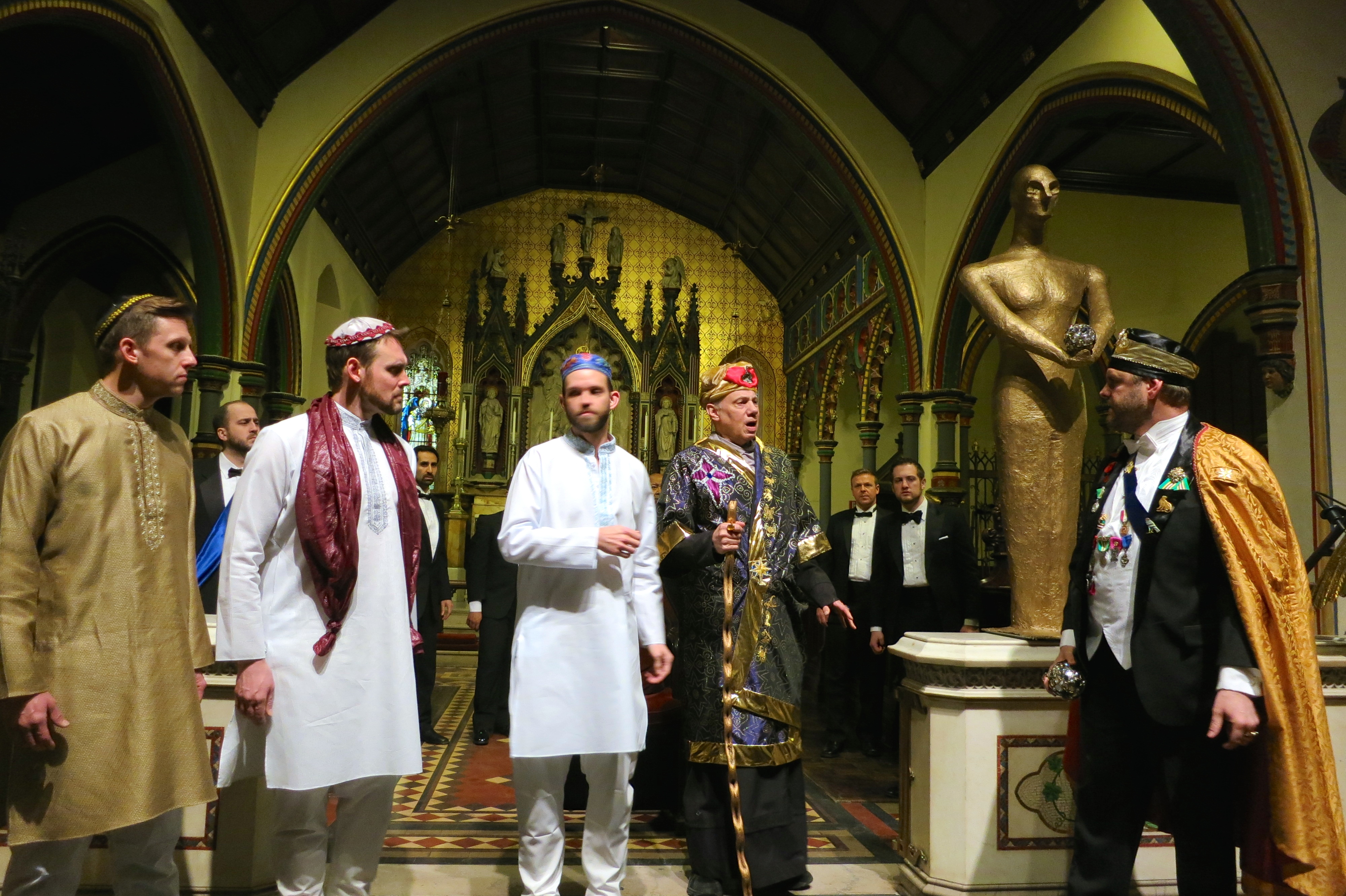The Church of the Transfiguration, also known as “The Little Church around the corner,” was the venue for a performance of the second of composer Benjamin Britten’s three Parables for Church Performance, the 1966 The Burning Fiery Furnace, Op. 77, on March 28, 2014. This work was preceded by a “curtain raiser,” the composer’s Missa Brevis in D, Op. 63, scored for three-part treble chorus and organ. Anyone expecting a simple euphonious work would have been quite disappointed. The Missa Brevis is a complex and demanding piece, full of polytonality, complicated meters (7/8 in the Gloria), and other twentieth century devices which would have challenged any adult chorus. The Transfiguration Boys Choir was fully up to the task, singing with note-perfect precision and flawless intonation. The unnamed soloists, drawn from the chorus, sang beautifully. The boys were rehearsed and conducted by the choir’s director Claudia Dumschat. Erik Birk was the skillful organist.
The performance of the Transfiguration Boys Choir set a very high bar for the adults performing the Burning Fiery Furnace. I am happy to report that they were all up to the challenge. Repeating a dramatic motif from The Church of the Transfiguration’s 2012 performance of the third Parable, The Prodigal Son (The Prodigal Son: NY Concert Review, March 9, 2012), the opening of The Burning Fiery Furnace featured chanting monks dressed in robes and cowls, proceeding down the center aisle. When they reached the front of the church, the monks’ Abbot addressed the audience/congregation. The soloist was bass-baritone Peter Ludwig, who with warm and persuasive singing drew us all into the drama and mystery which was to follow. The monks then took off their robes, revealing the costumes of the characters they were to play. Mr. Ludwig became the work’s villain, his dual roles allowing him to show his skills as a wonderful singing actor.
All of the vocal soloists were fine singing actors: Tenor Daniel Neer as Nebuchadnezzar; Nicolas Connolly as The Herald and Leader of the Courtiers; Bill Cross, Christopher Preston Thompson and David Baldwin as Shadrach, Meshach and Abednego, the three men who would be put in the fiery furnace. Masters Jeffrey Kishinevsky and Charles Rosario, members of The Transfiguration Boys Choir, stole the show with their jolly portrayal of the Boy Entertainers. Another high point was the beautiful singing of boy soprano Matthew Griffin as the Angel who protects the three men in the fiery furnace. Also memorable was the ethereal singing of the Angel Chorus made up of Alexis Cordero, Jeffrey Kishinevsky, Charles Rosario and Kennin Susana, and to be complete, mention must be made of the strong contribution made by the Chorus of Courtiers.
I described The Church of the Transfiguration’s March 9, 2012 production of The Prodigal Son as “a performance that succeeded in all aspects.” The same can be said of tonight’s production of The Burning Fiery Furnace. Praise again must go to Music Director Claudia Dumschat who led the fine chamber orchestra and performed the organ part. Under her leadership, the musical preparation and execution were exemplary. Mention should also be made of the evocative costumes by Costume Designer Terri Bush. The dramatic action, which was the responsibility of Dramaturg/Stage Manager Betty Howe and Stage Director Richard Olson was persuasive and melded seamlessly with the singing. All in all, it was another wonderful performance.

